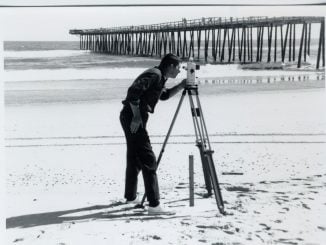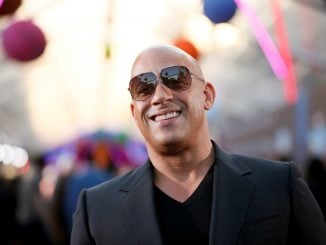
Ever wonder what would happen if 1896 met 2016?Wonder no more because Greensboro’s art community has answered that question. “Waving Wonder” and “Where We Met” is industrialization and modernity woven into one.Not sure how that looks? Then it’s worth the visit to the Greensboro Historical Museum, which houses the “Weaving Wonder” exhibit, and the newly opened LeBauer City Park, which is home to the mammoth and elegant “Where We Met” sculpture by renowned international artist Janet Echelman, who was named an Architectural Digest 2012 innovator for “changing the very essence of urban spaces.”The new, colorful sculpture “spans 200 feet between 60-foot tall masts, each bearing up to six tons of force” and it has “35 miles of technical fibers crafted into 242,800 knots, which gently pulse in breeze, creating an ephemeral presence in the sky above the new city park” according to Echelman’s website, echelman.com.”The inspiration for the artwork was the history of Greensboro,” said Greensboro Historical Museum Director Carol Ghiorsi Hart. “That part of the story is uniquely interesting. When you drive by, you see a hammock, netting, colorful sculpture hanging in the air, 55 feet up in the air, 90 x 60 feet. It’s pretty spectacular. Most of the people driving by may wonder, ‘What the heck is that?’ And the exhibit (“Weaving Wonder”) tries to explain that.”The inspiration was an 1896 railroad map of the system that highlighted where the textile mills were,” Hart continued. “Greensboro had an important role in textiles, and certain textiles here were the reason it was the denim capital of the world. Trying to bring the textile history that we have and our role as the Gate City together; that name comes from that we were the [gateway] of the railroad system.”Because there were more than 15 manufacturing plants in Greensboro in the late 1800s, the city’s railroad system, which ran north to south and east to west, handled more than 60 incoming and outgoing trains per day.”Janet looked toward that railroad history and that textile history and that came together in the design,” Hart said. “She looked at a spider web and used that as a framework from where the netting drapes. … It’s there, it’s hard to see, but if you come to the exhibit, you can see the overlay of the map, with her design of the sculpture. … It’s a pretty ‘wow moment’ and there’s a sense of wonder.”Wonder, the unmistakable focus of both exhibits.An interactive kiosk helps people learn more about the exhibit, and there are also other tools in the exhibit that help educate people about public art in Greensboro.But if someone limits their viewing of “Where We Met” to the daytime, they’ll miss out on the real wonder of the sculpture its magnificent color that can be seen radiating at night. The public can attend the official lighting Sunday at 8:30 p.m. Echelman will be in attendance.”At night, it’s even more spectacular,” Hart explained. “It seems to almost glow when the lights hit it and change color. They’ll be able to change the color of it; that’s one of the beauties of Janet’s artwork, it’s that it’s always changing. The color of the sky, the weather, when the wind blows, it’s constantly changing.”It’s a place where people will relax, lie on the grass, people will meet here, discuss and argue what it all means. It will quickly become and iconic feature of Greensboro.”




